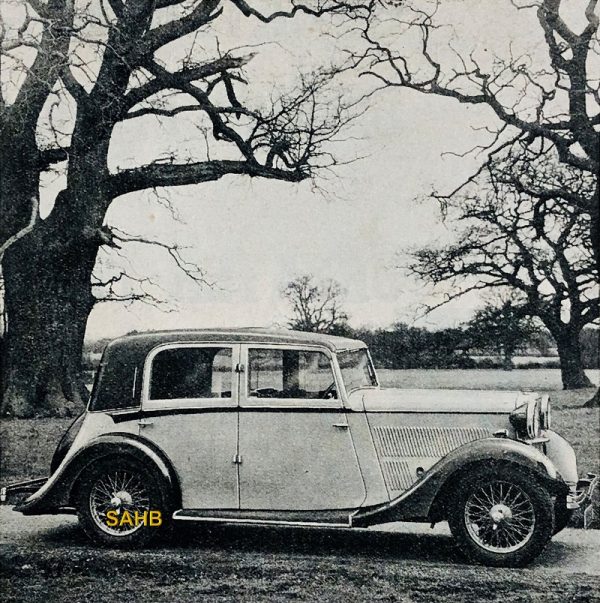
The Dawn was the last design of the old Wolverhampton-based Sunbeam concern. Subsequent cars were all Rootes designs.
Sunbeam’s road and racing cars built a formidable reputation between the wars, thanks in no small part to their designer Louis Coatalen, who joined them in 1909 and became joint managing director in 1914. On the road, that reputation was principally based upon large, sporting cars that competed effectively with Bentley and Alvis, so Sunbeam’s introduction in 1934 of a smaller model was a risky move – despite the necessity of remaining relevant in a challenging post-depression market.
The Dawn was priced at £485; its advertising slogan was “The best of the better cars.” It was an advanced design owing much to the larger Sunbeam 25 and was built to the company’s traditionally high standards. Although powered by a small 1,627cc overhead-valve four-cylinder engine, there was no skimping in the details of the design. The cylinder block and crankcase were aluminium with chrome-nickel iron wet liners; pistons were made with steel skirts and aluminium alloy heads; and pushrods were of Duralumin to balance the expansion of the cylinder block.
The whole car was designed to have the drive and feel of the larger Sunbeams, and therefore featured independent front suspension by means of wishbones and a transverse leaf spring. Other high-quality features were hydraulic brakes and centralised chassis lubrication. Output was 49 horsepower to pull a weight of 26 cwt – so this was no sports car. Early cars were fitted with a Wilson pre-selector gearbox, later examples with a conventional four-speed manual change.
Sadly, the collapse of the Sunbeam-Talbot-Darracq combine in 1935 and its subsequent acquisition by the Rootes brothers meant that the Dawn never got the chance it deserved, enjoying a production life of a mere two years. Only around 575 Dawns were made, in saloon form only, with the option of 4-light (as in our Snapshot) and 6-light bodies.
Image courtesy of The Richard Roberts Archive: www.richardrobertsarchive.org.uk







Leave a Comment